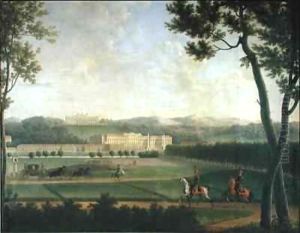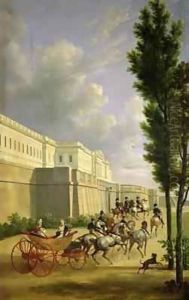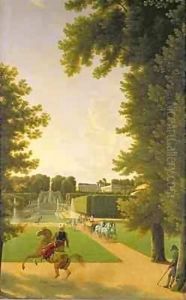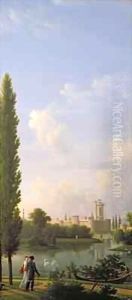Jean and Vernet, Antoine Bidauld Paintings
The names you provided, Jean Vernet and Antoine Bidauld, refer to two different French artists from the 18th and 19th centuries, respectively, who were known for their distinctive contributions to art. Due to the nature of your request, I will provide separate biographical summaries for each artist.
Jean Vernet, more commonly known as Claude-Joseph Vernet, was born in 1714 in Avignon, France. He was a landscape and marine painter whose work represented the French school of classical landscape painting. Vernet showed an early talent for art and studied with his father, Antoine Vernet, a skilled decorative painter. He then moved to Rome to study under landscape painter Bernardino Fergioni, which allowed him to refine his style, incorporating elements of Italianate landscape painting.
Vernet became particularly famous for his series of the ports of France, commissioned by King Louis XV in 1753. These paintings were part of a royal initiative to document and celebrate the nation's naval and commercial harbors. Through these works, Vernet gained acclaim for his ability to capture the atmospheric conditions and the bustling activity of the ports. His seascapes often included dramatic skies and shipwrecks, reflecting the Romantic sensibility that was emerging in the late 18th century. Claude-Joseph Vernet passed away in 1789 in Paris, leaving behind a legacy of influential landscapes that would be admired for generations.
Antoine Bidauld, on the other hand, was born as Joseph Bidauld in 1754 in Carpentras, France. He was a landscape painter who became known for his meticulous depiction of nature. Bidauld's brother, Jean-Pierre-Xavier Bidauld, was also a painter, and together they traveled to Italy in 1785, where Joseph was profoundly influenced by the Italian landscape. This journey was a turning point in his career, and he became a prominent member of the Neoclassical movement, which sought to revive the ideals of classical antiquity.
Bidauld's works often featured Italian scenery, particularly the countryside around Rome, Florence, and Naples. His paintings were characterized by their attention to detail and their faithful representation of the natural environment. Bidauld's dedication to capturing the essence of the landscape earned him the nickname 'le Poussin de son siècle' (the Poussin of his century), comparing him to the great French painter Nicolas Poussin. Bidauld returned to France in 1790 and continued to paint and exhibit his works at the Paris Salon. He received numerous accolades for his work, including being named a member of the Institut de France. Antoine Bidauld died in 1846 in Montmorency, France.
Both artists left an indelible mark on the art world, capturing the beauty and drama of the landscapes during their lifetimes, and their works continue to be celebrated for their technical mastery and emotional depth.



